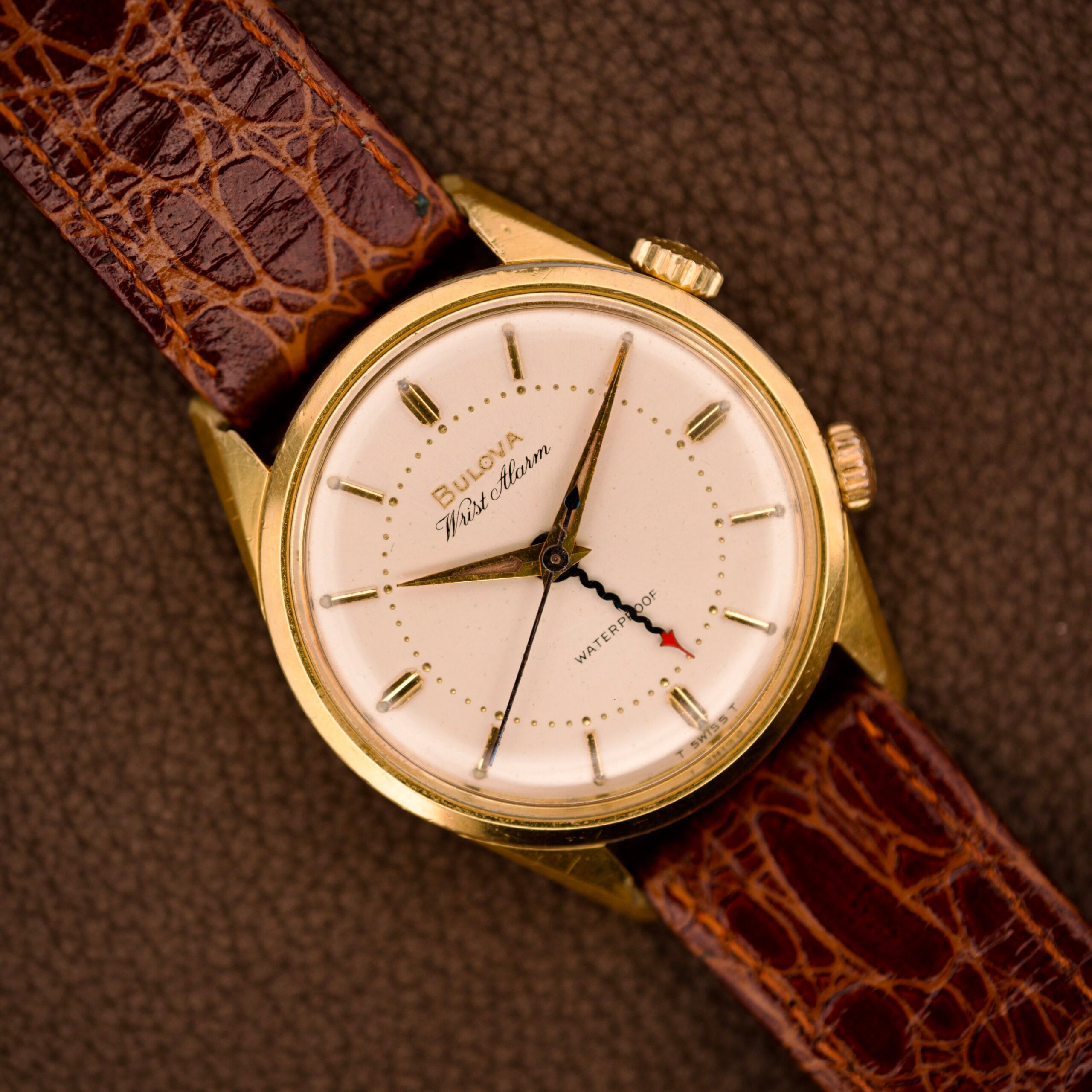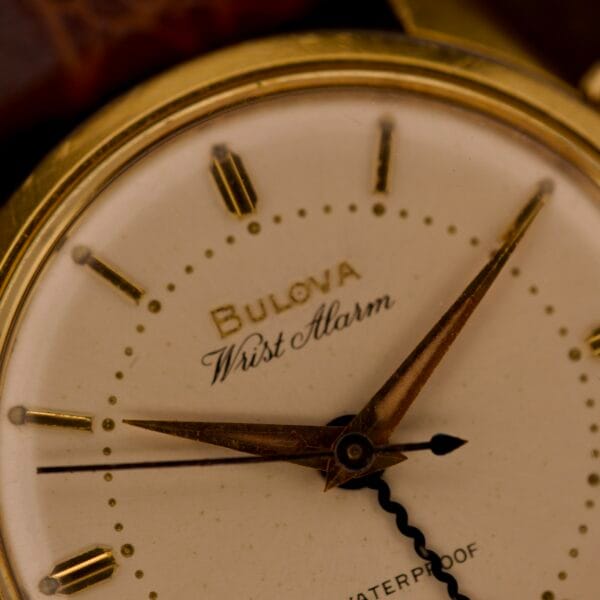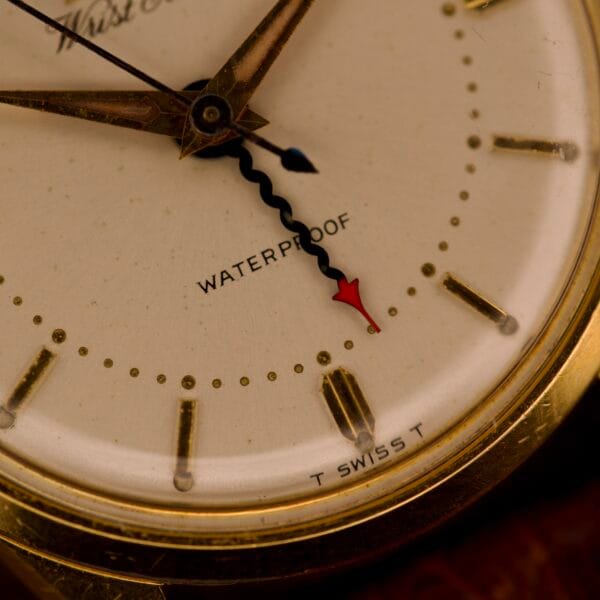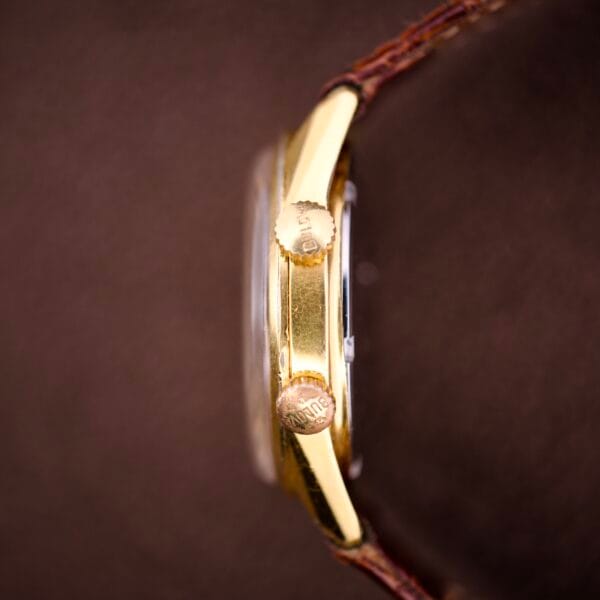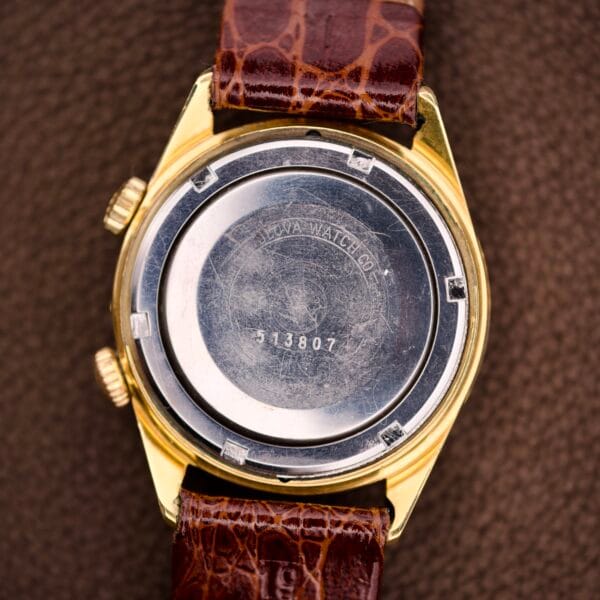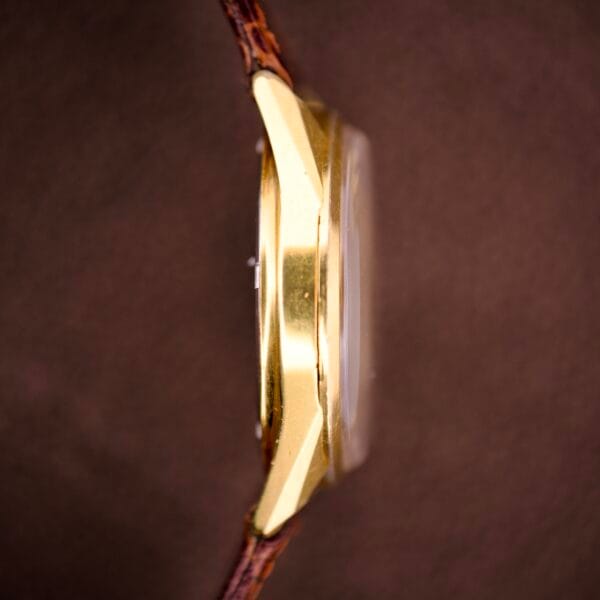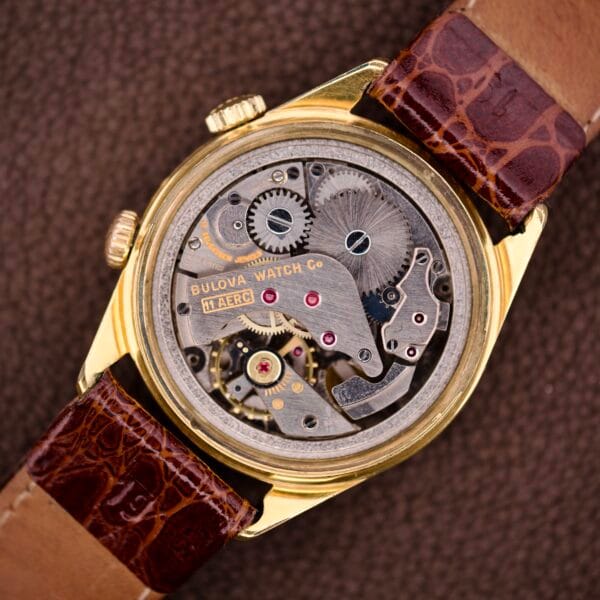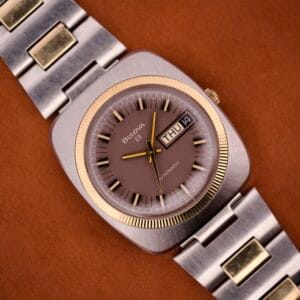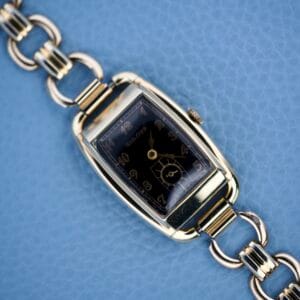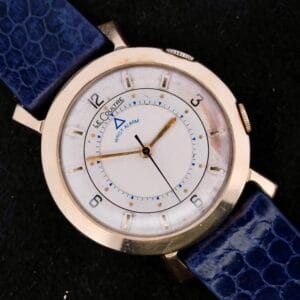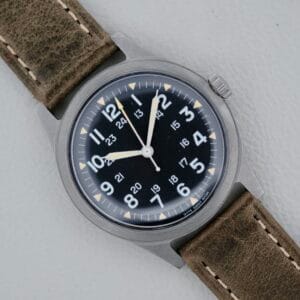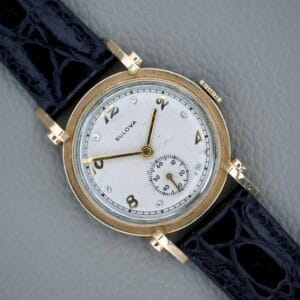Don't miss the next drop
Before the iPhone, before the digital beep, there was the mechanical alarm. Arguably one of the most romantic and genuinely charming complications, it’s a tiny, buzzing hammer-and-gong system engineered to live on your wrist. While Jaeger-LeCoultre had its legendary Memovox, the American powerhouse Bulova had this: the fantastic and aptly named “Wrist Alarm.”
The engine here is the main event. It’s the Bulova Caliber 11AERC, a 17-jewel, manual-wind manufacture alarm movement. This is, without question, one of the most important alarm calibers of the 20th century, as it’s Bulova’s proprietary version of the A. Schild 1475 ebauche. This is the very same base movement that powered the iconic Vulcain “Cricket,” the “Watch of Presidents.” This is serious, serious horological DNA. It’s a robust, twin-barrel system: one for the timekeeping, one for the alarm, all operated by the two crowns.
This particular example is just dripping with 1960s charm. The case is a high-quality, 40-micron gold-plated design, far thicker and more durable than standard plating, and it fantastically retains both of its original, signed “B” crowns. The dial is the real star, though. It’s a beautiful cream-white, set with applied gold indices and faceted dauphine hands. But that alarm hand is what sets it apart: a wild, black “serpentine” arrow with a bright red tip. It’s a playful, legible, and confident piece of mid-century design.

